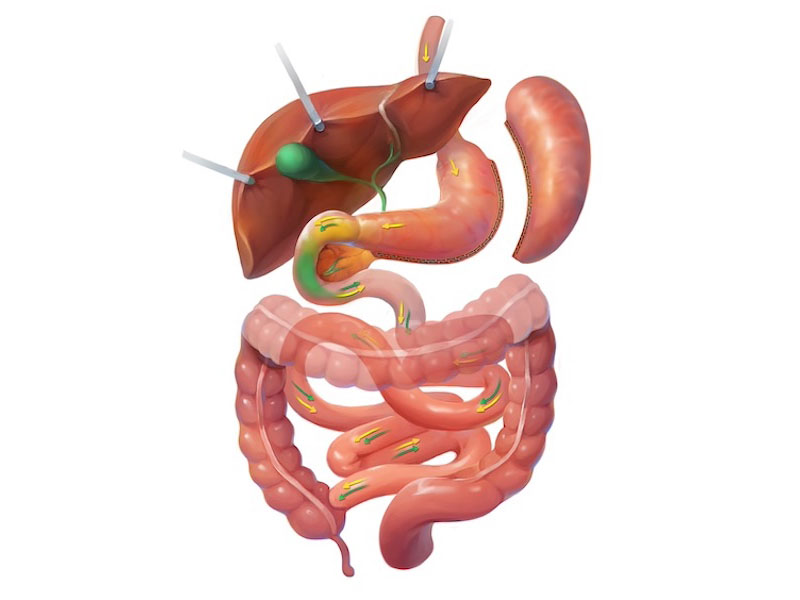
From its introduction as the first phase of a two-part procedure known as the duodenal switch, the gastric sleeve, also referred to as sleeve gastrectomy, has rapidly become the most popular bariatric surgery in the United States. The gastric sleeve is almost always performed in a minimally invasive manner, using four or five small incisions, each measuring ½ to 1 inch, in the abdomen. The surgical team then uses a high-definition camera to visualize the abdomen. Next, specially made medical devices are inserted through the tiny incisions to perform the procedure. Over the past couple of decades, robotic technology has advanced to the point where our practice performs virtually every procedure using it.

The surgeon cuts away approximately 70 to 80% of the existing stomach pouch along the greater curvature, creating a newly formed, sleeve-shaped stomach pouch about the size and shape of a banana. The portion of the stomach that was cut away is removed from the abdomen.
Because the gastric sleeve is a purely restrictive procedure, it does not offer the same potential for excess body weight loss and resolution of obesity-related diseases as the gastric bypass or duodenal switch. However, the gastric sleeve provides an average of 70% excess body weight loss and excellent prospects for disease resolution or improvement. The digestive system remains intact, distinguishing the gastric sleeve from other stapled procedures. This usually means that patients have fewer dietary restrictions after surgery.
Patients who undergo the gastric sleeve will usually spend one night in the hospital. This, of course, will depend on the speed at which the patient is recuperating and healing.
To learn about gastric sleeve surgery and determine if it may be the right option for you, we encourage you to contact our office to schedule a consultation with Dr. Ghanem.